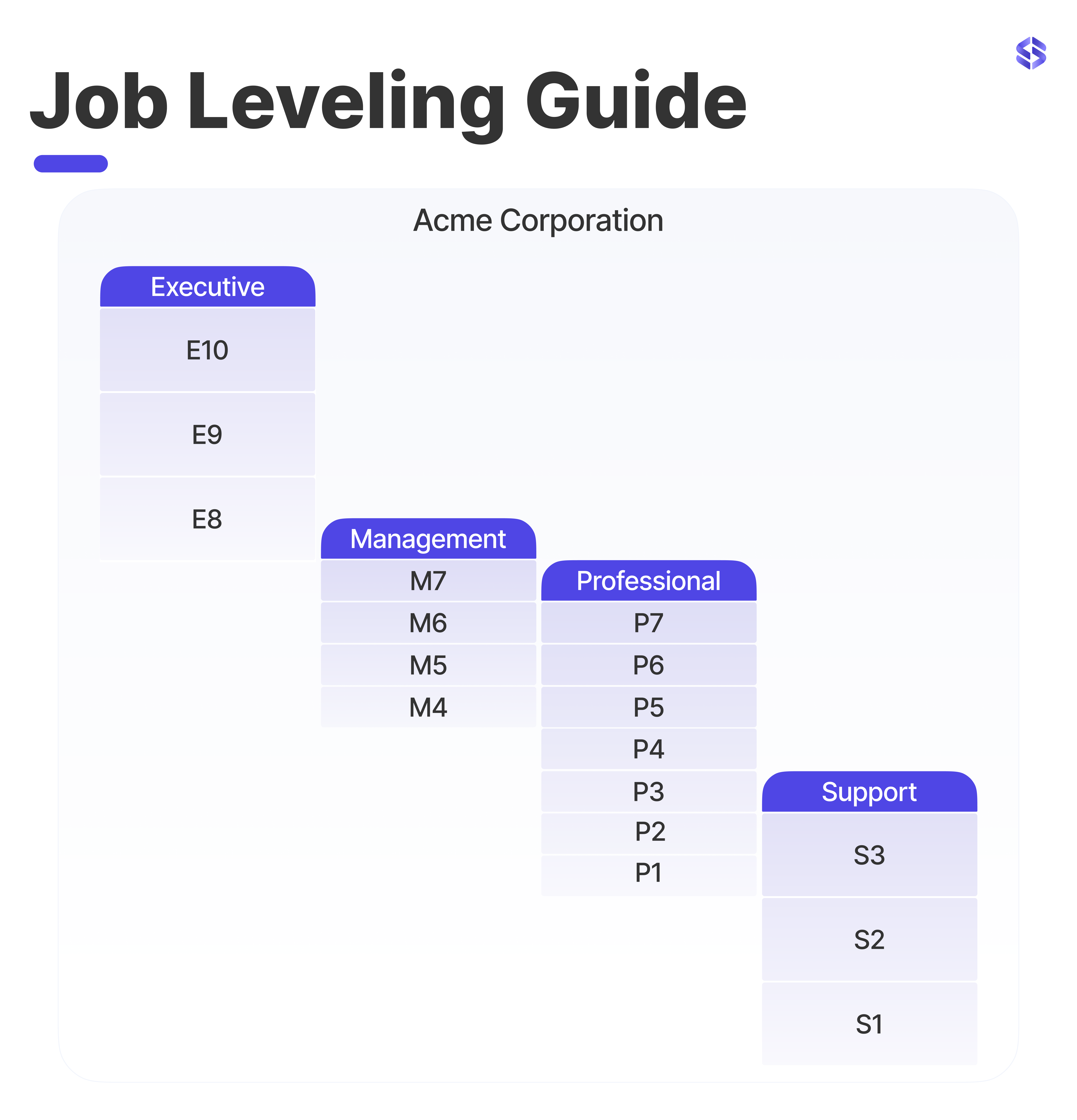8 Months to Go: How to Build Job Levelling for the First Time in Your Company
7 October 2025 marks the 8-month countdown to the 🇪🇺 EU Pay Transparency Directive going live.
With the EU Pay Transparency Directive taking effect June 2026, small and midsize companies across Europe face a fundamental shift in how they manage pay. Job Leveling a key tool HR leaders can use to bring clarity to job architecture and career paths. For fast-growing companies, job leveling is also one of the hardest systems to design well. Done right, leveling gives every employee a clear view of their role, next steps, and how pay decisions are made. Done poorly, job leveling (or lack thereof) erodes employee trust and damages retention of top talent.
This article explains how to build a job leveling framework from the ground up using best practices and what mistakes to avoid. The focus is on technology and professional services firms, where roles evolve quickly and transparency is expected.
We also explore how AI is reshaping job leveling, making frameworks more dynamic, data-driven, and continuously updated as work changes.
Why We Love Job Leveling
Job leveling creates a shared language across the organization. A product manager in one team knows they’re on the same level as a data scientist in another. A manager understands what separates their role from a senior individual contributor. Leaders can make consistent decisions on pay, promotion, and hiring.
The data backs it up. Companies with structured job frameworks see higher internal mobility and lower turnover. Clear progression ranks among the top three drivers of retention in software companies. Candidates are also more likely to accept offers when job levels and salary bands are transparent.
Choosing Your Job Leveling Structure
Most companies start with one of three models:
-
Numeric ranges Levels are numbered from 1 to 5, or up to 12 in larger firms. For example, Level 1 may be an entry-level analyst, while Level 12 is a C-suite executive.
-
Hybrid numeric-alphabetic Letters show role type; numbers show seniority. A common scheme is:
- L for individual contributors (L6, L7, L8)
- M for managers (M1, M2, M3)
- E or C for executives (E1 for VP, C1 for CEO)
-
Career-stage anchored Levels align with milestones such as Intern, Graduate, Junior, Mid, Senior, Principal, Director, VP, and Executive. These are easy to understand and match external hiring markets.
No single model fits all. The right choice depends on company size, growth rate, and desired flexibility. Early-stage firms favor simplicity; large organizations need more levels to capture breadth and depth.

What to Include in Your Framework
A strong framework covers every employee group. Leaving anyone out creates confusion and inequity. At a minimum, include:
-
Interns and early-career hires: Candidates want to see a path beyond internships
Note: Some companies assign a specific number (e.g., Level 0) or a letter to designate interns in their leveling system. If you use the letter "L" for individual contributors and "I" for interns, be aware that uppercase "I" and lowercase "l" can look very similar, especially in certain fonts or formatting. Choose markers that will be visually clear to everyone reading your framework.
-
Individual contributors: Engineers, designers, product managers, and salespeople
-
Managers and team leads: Define the difference between managing work and managing people
-
Executives: Clarify expectations for directors, VPs, and C-suite roles
Each level should define three elements:
- Scope: The size and complexity of work
- Skills: The capabilities required to perform effectively
- Impact: The measurable value delivered to the organization
Common Pitfalls to Avoid When Building Job Levels
- Too many levels: Complexity slows decisions and confuses employees
- Titles without substance: Promotion inflation erodes credibility
- Ignoring pay equity: Unequal leveling between groups creates legal and reputational risk
- Lack of manager training: Managers must understand and apply leveling consistently
AI-Powered Job Leveling
AI is reshaping how work is designed. Roles evolve faster than traditional frameworks can handle. Forward-looking companies now use AI tools to do job analysis, identify skill gaps, and track career progression in real time.
Leveling frameworks will become more dynamic. Instead of static PDFs, they’ll live as digital systems that update continuously as roles change. Companies that adopt this approach will be better equipped to attract, develop, and retain top talent.
Sophare AI is at the forefront of AI-native tooling for HR. We help organizations automate job analysis, structure consistent leveling frameworks, and align compensation decisions with real-time data.
FAQ
What is job leveling?
Job leveling is the process of defining and organizing roles within an organization based on scope, skills, and impact. It helps create consistency in pay, promotions, and career development.
Why is job leveling important for EU Pay Transparency Directive compliance?
The EU Pay Transparency Directive requires companies to compare compensation for employees performing the same or substantially similar work. A clear leveling framework ensures those comparisons are consistent and defensible.
How does Sophare AI support job leveling and pay transparency?
Sophare AI automates job analysis, role grouping, and pay comparison processes using real-time data. This helps organizations maintain accurate, compliant, and dynamic job leveling frameworks as roles evolve.
